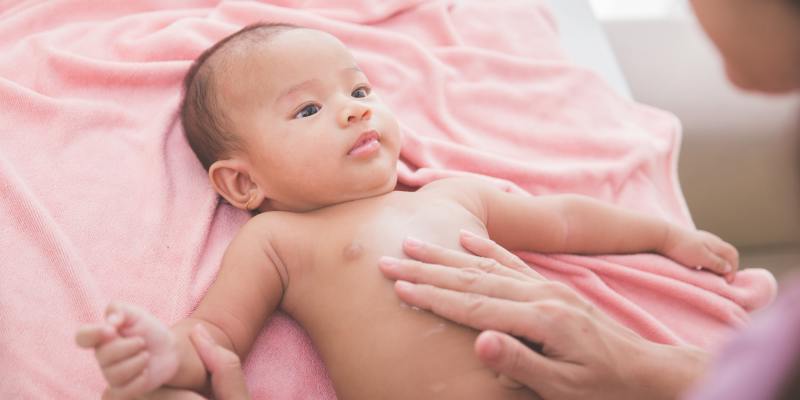As a parent, encountering a rash on your baby’s skin can be a cause for concern and confusion. Understanding the different types of baby rashes and their potential causes is crucial for providing appropriate care.
In this comprehensive guide, we’ll explore common baby rashes, helping you identify and address them with confidence.
Common Types of Baby Rashes
- Diaper Rash: Identification: Typically appears as red, inflamed skin in the diaper area. It can be caused by prolonged exposure to wetness, chafing, or a reaction to certain diaper brands or wipes. Care: Change diapers frequently, use a gentle fragrance-free diaper cream, and allow the area to air-dry.
- Eczema (Atopic Dermatitis): Identification: Presents as red, dry, and itchy patches, often on the face, scalp, or joints. Genetics, environmental factors, and irritants can contribute to eczema. Care: Keep the skin moisturized with a hypoallergenic lotion, use mild soaps, and avoid potential triggers like certain fabrics or allergenic foods.
- Heat Rash (Prickly Heat): Identification: Appears as small red bumps in areas prone to sweating, such as the neck, armpits, or diaper area. Caused by blocked sweat ducts in hot and humid conditions. Care: Keep the baby cool, dress in lightweight, breathable clothing, and avoid overdressing.
- Baby Acne: Identification: Small red or white bumps on the face, especially the cheeks and forehead. Caused by hormonal changes in newborns. Care: Gently cleanse the face with water, avoid harsh chemicals, and be patient as baby acne usually resolves on its own.
- Cradle Cap: Identification: Yellowish, greasy, scaly patches on the scalp. Thought to be related to overactive oil glands. Care: Gently wash the scalp with a mild baby shampoo and use a soft brush to loosen scales. Consult a pediatrician for persistent cases.
- Impetigo: Identification: Red sores or blisters that may ooze and form a yellowish crust. Caused by bacterial infection, often from scratching existing skin irritations. Care: Keep the affected area clean, apply antibiotic ointment if prescribed by a doctor, and ensure proper hand hygiene to prevent the spread of infection.
When to Seek Medical Attention
While many baby rashes are harmless and resolve with proper care, some may require medical attention. Consult a healthcare professional if:
- The rash is spreading rapidly.
- The baby has a fever or appears unwell.
- The rash is accompanied by other symptoms like difficulty breathing or swelling.
Conclusion
Identifying and caring for baby rashes involves a combination of observation, gentle care practices, and, in some cases, professional guidance.
By understanding the characteristics and potential causes of common baby rashes, parents can confidently navigate the journey of keeping their little ones’ delicate skin healthy and happy.
Always consult with a healthcare professional for personalized advice and guidance based on your baby’s specific needs.

